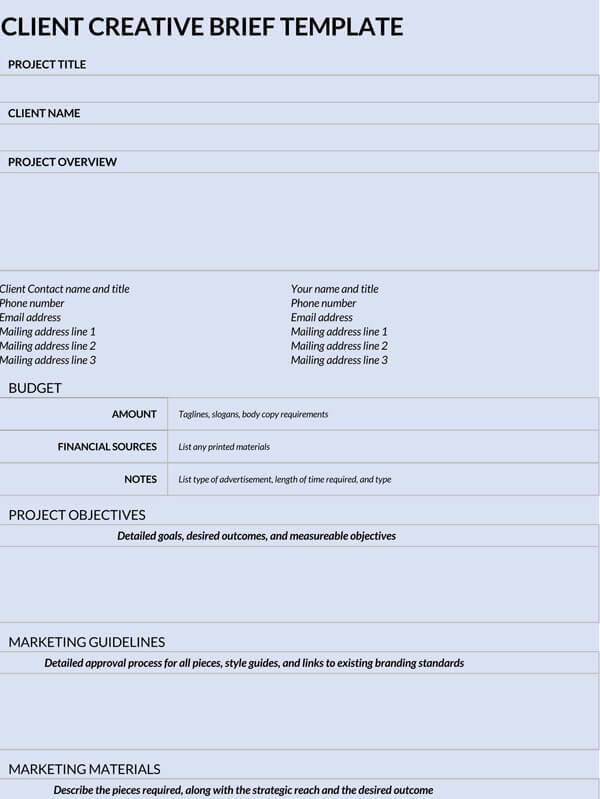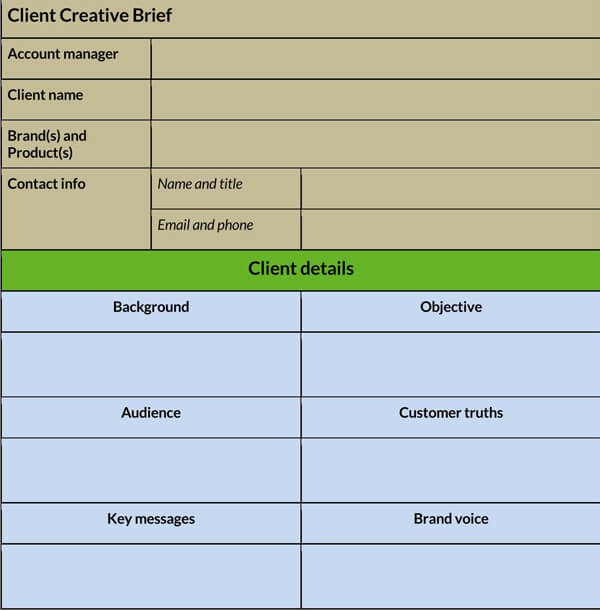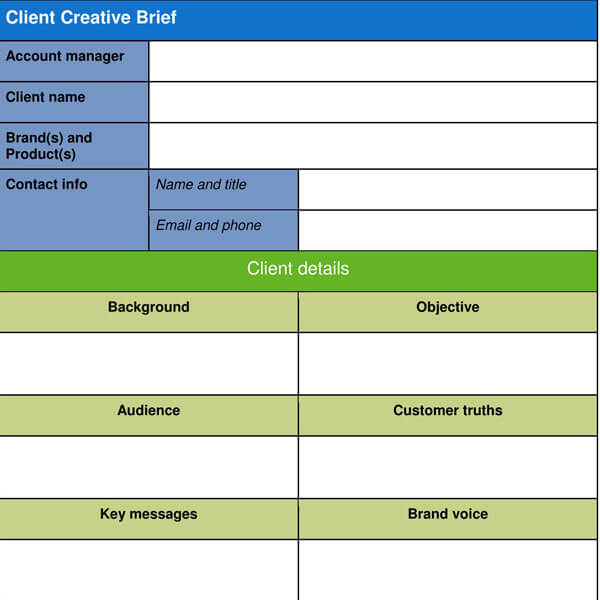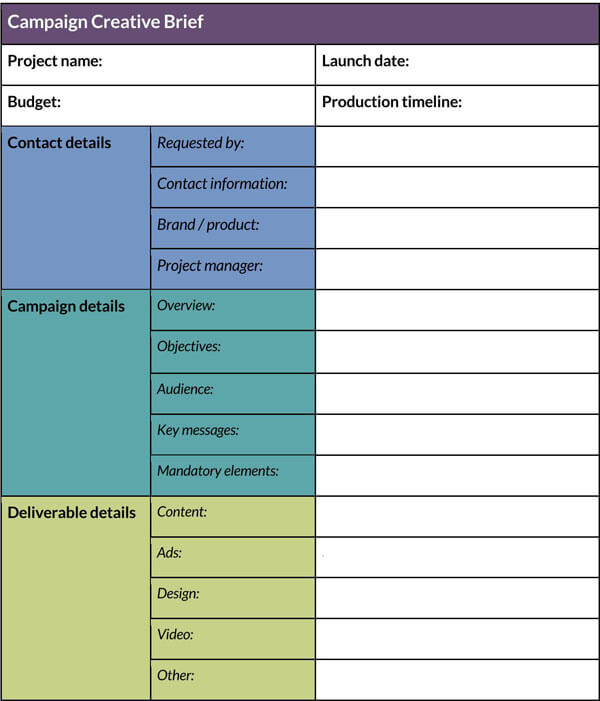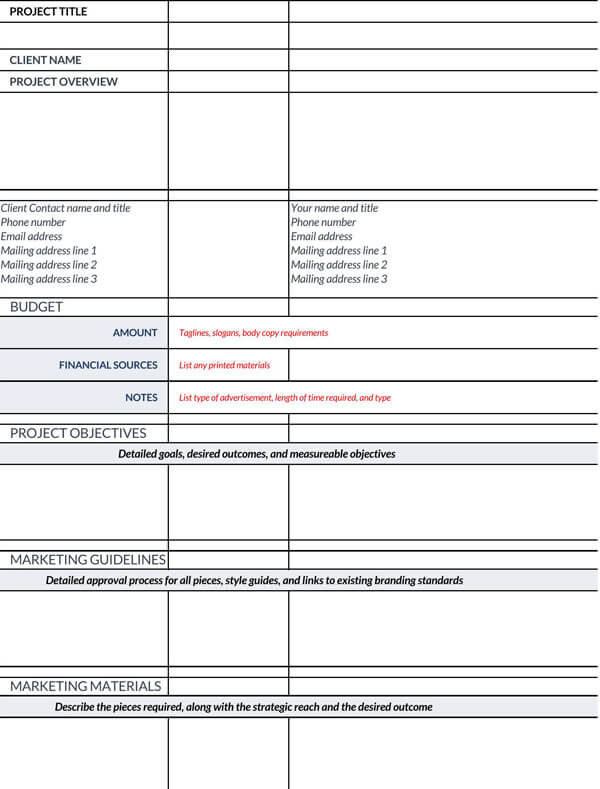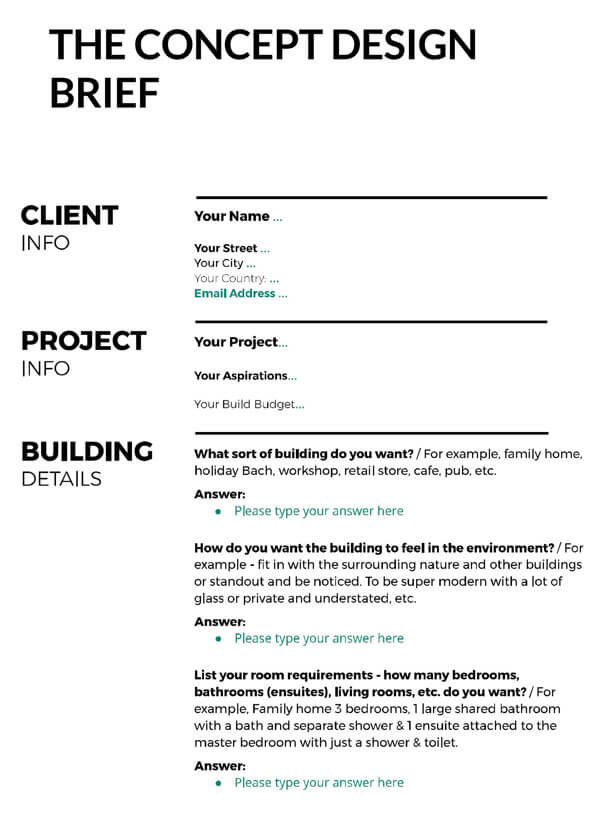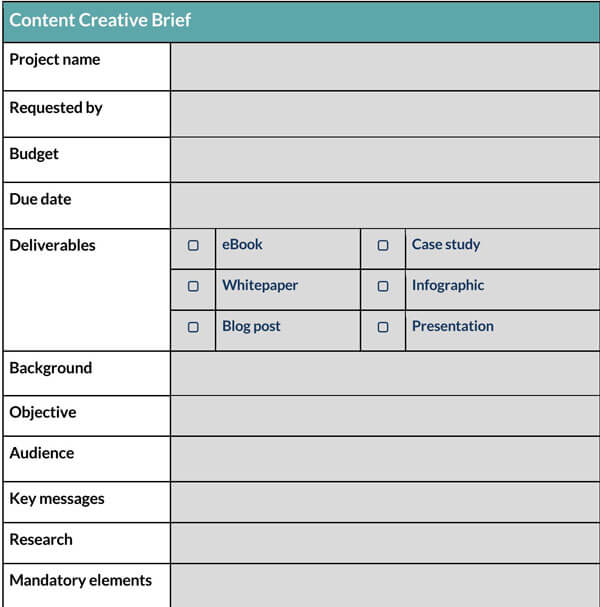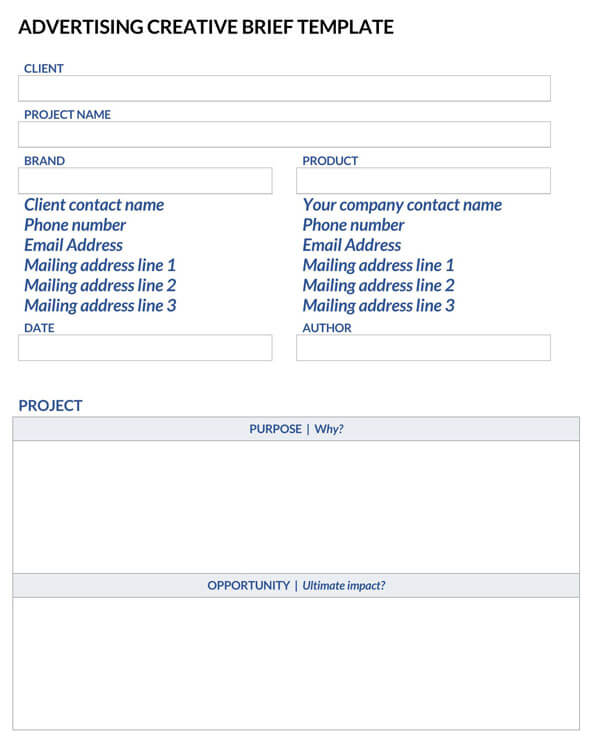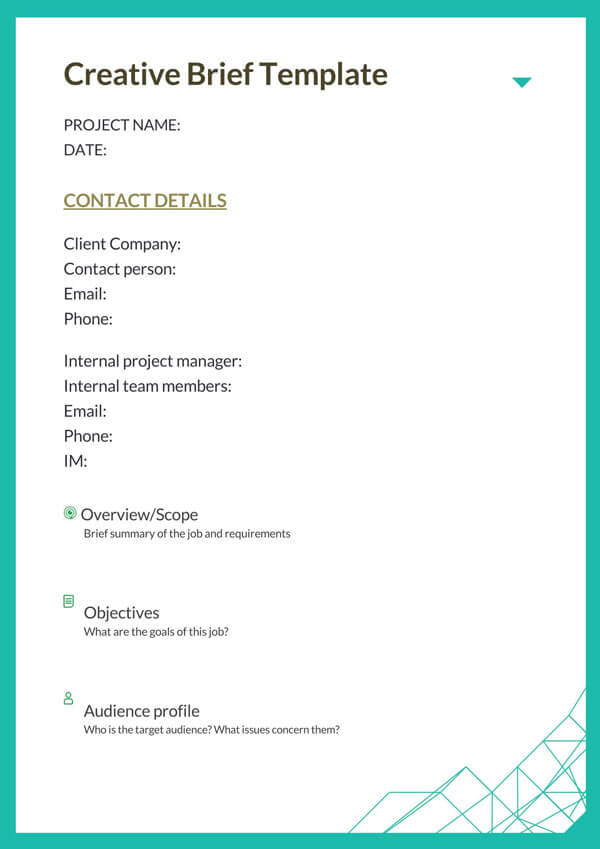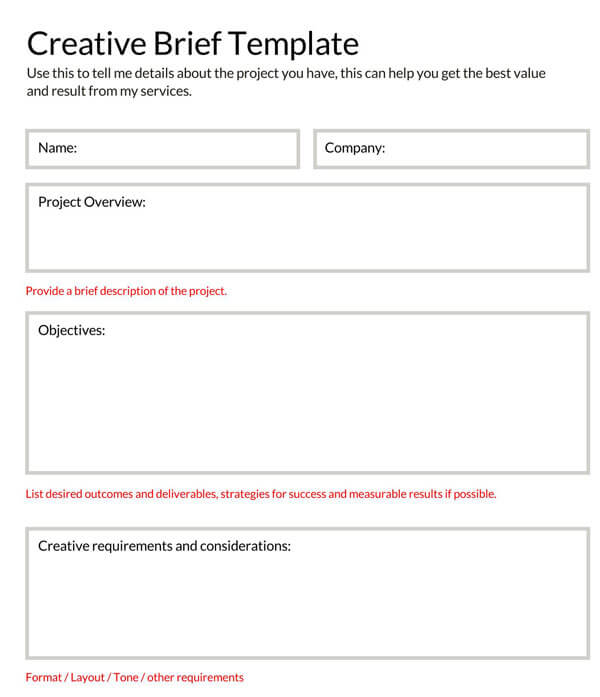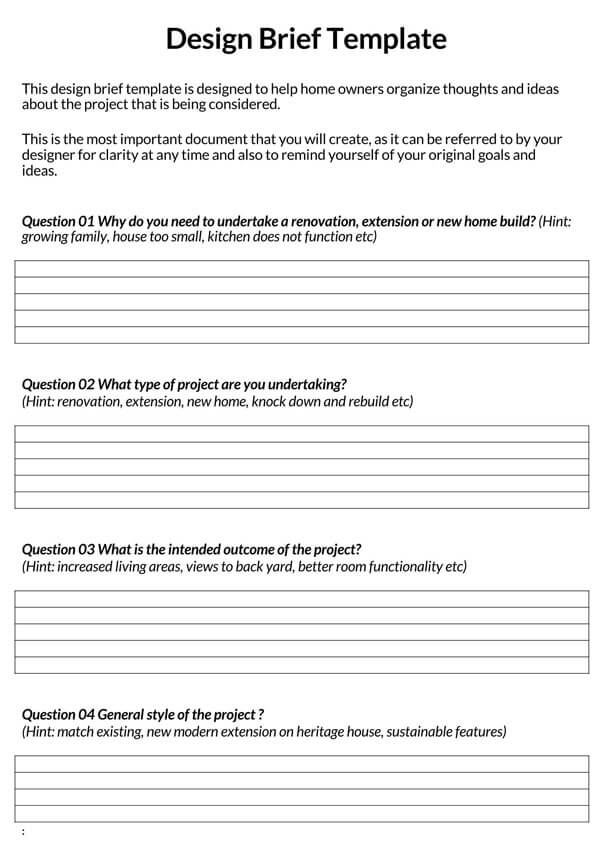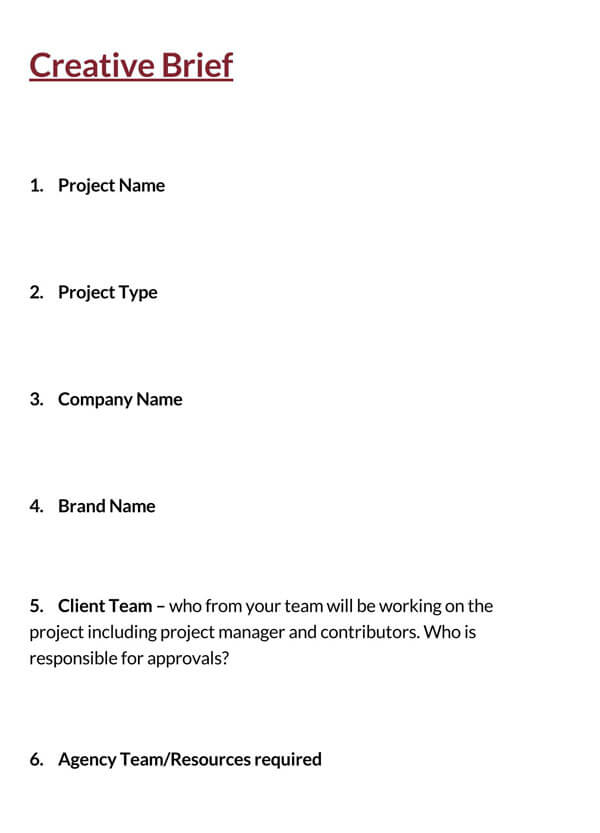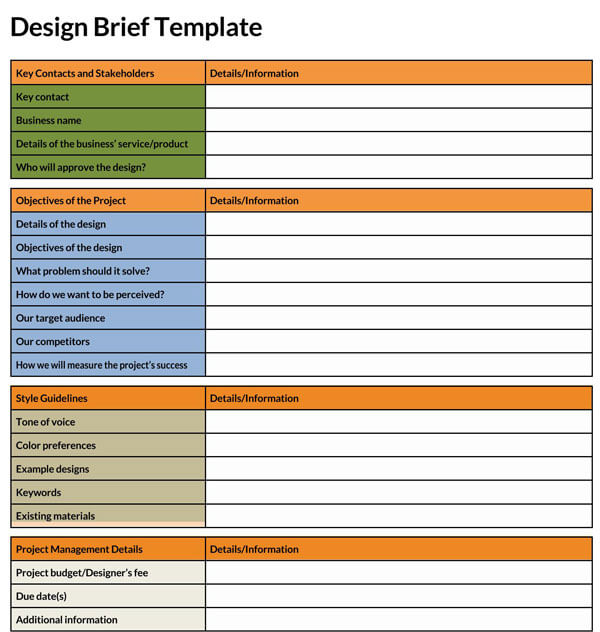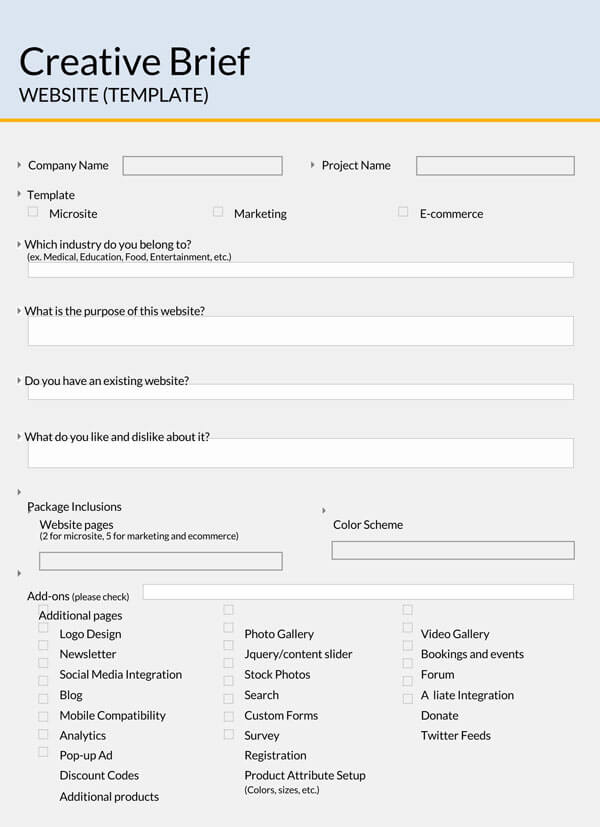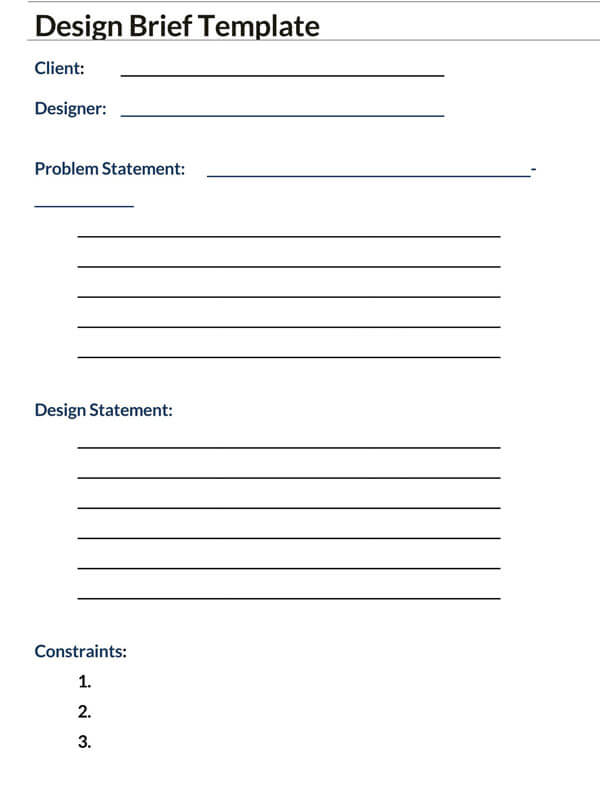Whether you are looking to partner up with an external creative firm or going in-house, sharing a creative brief with all the parties involved ensures that everyone is on the same page. After all, if you invest your time and money to work with an agency on a well-executed marketing campaign, you want to ensure that you are getting the most out of your partnership. Consequently, if you are working with a team, they are more likely to deliver high-quality results if they understand what exactly you want.
What is a Creative Brief?
A creative brief is a short yet detailed summary of your organization’s background, strategy, campaign goals, and creative project requirements. Creative briefs are usually created during the project initiation phase and are used to help the creative team better understand the project’s ins.
NOTE: Creative briefs are not always unique to a specific project and can be used to provide the blueprint for all the project deliverables, whether one is working on a social project, promotional assets, social media visuals, etc.
Why Do You Need a Creative Brief?
Doing something that you don’t entirely understand can be a waste of time and energy. Your creative team needs to understand your project’s purpose, objectives, the reason for its’ existence, and what is required of them. In a creative brief, you clearly define your vision and justify the benefits of the project, as well as lay out a plan on how the project will reach its target audience. From the get-go, a creative brief ensures that everyone is on the same page before the onset of the project.
Here are reasons why you need to have a creative brief for all your projects:
- You need a plan: First of all, you need to have a plan for your project. Who will do what, when, and how? A creative brief helps you define all these questions, thereby making it easy for your team to work on the project.
- A well-drafted creative brief will save you time: By using a creative brief, you are not only providing your team with a guide but are also facilitating clear communication from the onset. The guide can help prevent any last-minute rush or changes resulting from poor communication or lack of understanding of the project’s requirements and conflicting objectives, something that can cost you and your team time and money.
- You’ll maintain accountability: By making sure that everyone is aware of who is working on what, when, and how, you will be able to keep everyone accountable for their actions, something which can lead to better results.
- Requests and Approvals will get processed faster: creative briefs foster clarity upstream, thereby minimizing confrontations during the review and approval cycle. It ensures that all the project details are included and that the team is aware of what they are working with.
- The final product will be of higher quality: By properly communicating the project’s objectives, laying out all the project deliverables, and making clear the expectations up front, the final product is more likely to be of a higher quality.
What is in a Creative Brief?
There are key elements that must be included in any creative brief, including:
Project Context and Background
To begin your creative brief, you first want to present the core elements of the project and your business to help the team that will be working on the project to better understand your brand. If you are mission-driven, have a specific point of view, or have set values, this is the place to communicate that, especially if you are working with an external creative team. However, if you are working with your in-house team, you may not need to include all the project’s historical details as they may have already known what the project is all about.
Target Audience
The more information you have on your target audience, the better your creative team will be able to work on your requests. Make sure that you have sufficient information about your target audience, such as their age bracket, their demographic, their self-interests, their average salary, etc. This information will help the creative team better understand whom they are dealing with and how best to tailor the project to fit that audience.
Deliverable Description
This is perhaps the most significant part of the whole document. This is where the client unveils the project’s vision, i.e., what they actually want. Failing to capture this part correctly may lead to disappointing results. Do not assume that you know what they already want. Ask questions to help you get a clear picture of what they actually want to avoid any revisions that may be both time consuming and costly.
Messaging
What message is the client trying to pass? Ask them to spell this out as simply as they possibly can. What words will be used, sum up the entire campaign? This is usually more like a campaign slogan- it should be short and easy to remember. The message should reflect on the brand and speak to your audience.
Brand/Campaign Details
In this section, inform your creative team of what you are looking to accomplish as well as how the project fits into a specific integrated marketing campaign and the entire strategy of your company. This is where you lay down all the details about the project. For instance, if you are looking to create an ad, you have to specify the duration of the ad, the content, the theme, the color to be used, the logo, and all the nitty-gritty of the project, especially if the design will be created by an external team.
Core Business Objective
What are your core objectives? Are you looking to reach new clients? Unless what your project is in line with your objectives, it is worthless even if done perfectly. Make sure that you go through your core objectives with the creative team to help them understand what you want and why you want it.
Stakeholders
Your stakeholders are the most important part of your project. They must be included when discussions are taking place in the project. Their details should be included in the creative brief to for use by the team in case they need further clarifications or need to make changes that they feel are necessary.
Due Date
The due date for the project is another key element that must be included. Make sure that you provide the creative team enough time to complete your project. A great way to do this is to break up the project into different milestones and set a deadline for each milestone.
Publications or Promotion venue
All campaigns have different messages that is specific to its audience and also different methods of reaching them. The method you use to reach your audience
will determine the design, tone, size and scale of the ads you use to reach them. Ensure that you familiarize with how and where your audience will engage with your final product and tailor your publications to go with that.
When Should You Use a Creative Brief?
There are three main instances where one may want to use a creative brief:
When tackling non-standard, non-iterative, highly conceptual work: when tackling this type of project, it is important to have a creative brief in place as such projects tend to be ambiguous. A creative brief will remove its ambiguity by breaking down the project into more manageable parts.
Execution of previous work across deliverables: when you are looking to execute previous work across deliverables, it is important to have a creative brief for your team. Although not as detailed as when tackling non-standard-highly conceptual projects, it is still important to have one for your team to help them have all the information they need before they start working on the project.
Edits, Revisions, Template work: although these are usually short and do not require many details, it is still important to have your team working with a creative brief. The brief will provide them with all the required information to make the edits and revisions thereby avoiding any further revisions which may be costly and time-consuming.
Conventionally, creative briefs have been templatized forms filled out by the person who manages a client’s relationship with the creative firm. The brief can, however, be written by the creative director, manager, planner, designer, producer or the account executive depending on who has more knowledge about the project.
Tips For Writing a Creative Brief
Write your own brief: The key to coming up with a great creative brief is writing your own tailored to the specific project you are looking to undertake.
Split your thought process: create different scenarios for the project. Look into different ways in which you can tackle the project and select one that best fits your situation
Have a single compelling idea: after deciding on the project, have a clear understanding of what, where and how the project will be tackled
Be guided by your goal: If you want to make the project a success, make sure to tailor the brief to go with your goals.
Mind your language: the language you use in your creative brief should be easy to read and understand. You don’t want to have the team members making assumptions of what certain phrases mean or insinuating certain things.
Creative Brief Templates
Here is a collection of Creative Brief Templates that you can download and use for all your projects:
FAQs
A well-drafted creative brief can make all the difference in running a project. With it, your team can be able to make sound decisions, work with a schedule in mind and deliver high-quality work. We hope that this guide has provided you with all the information you need to draft a great creative brief that will not only help you communicate effectively with your clients and creative team but also achieve the objectives of the project. Good luck!
